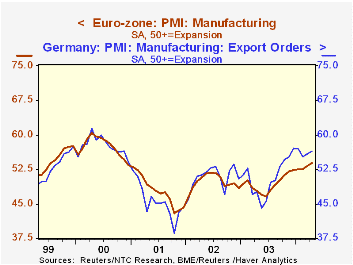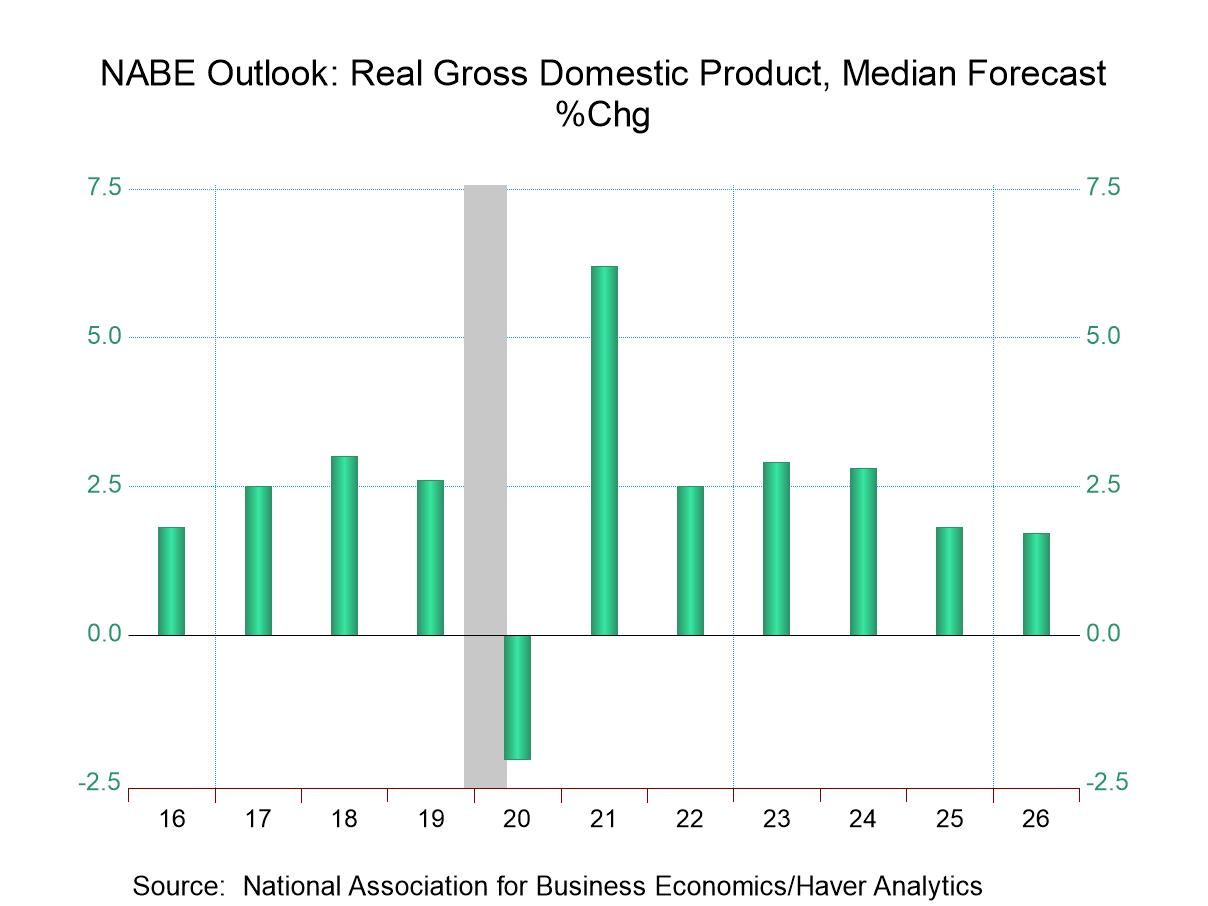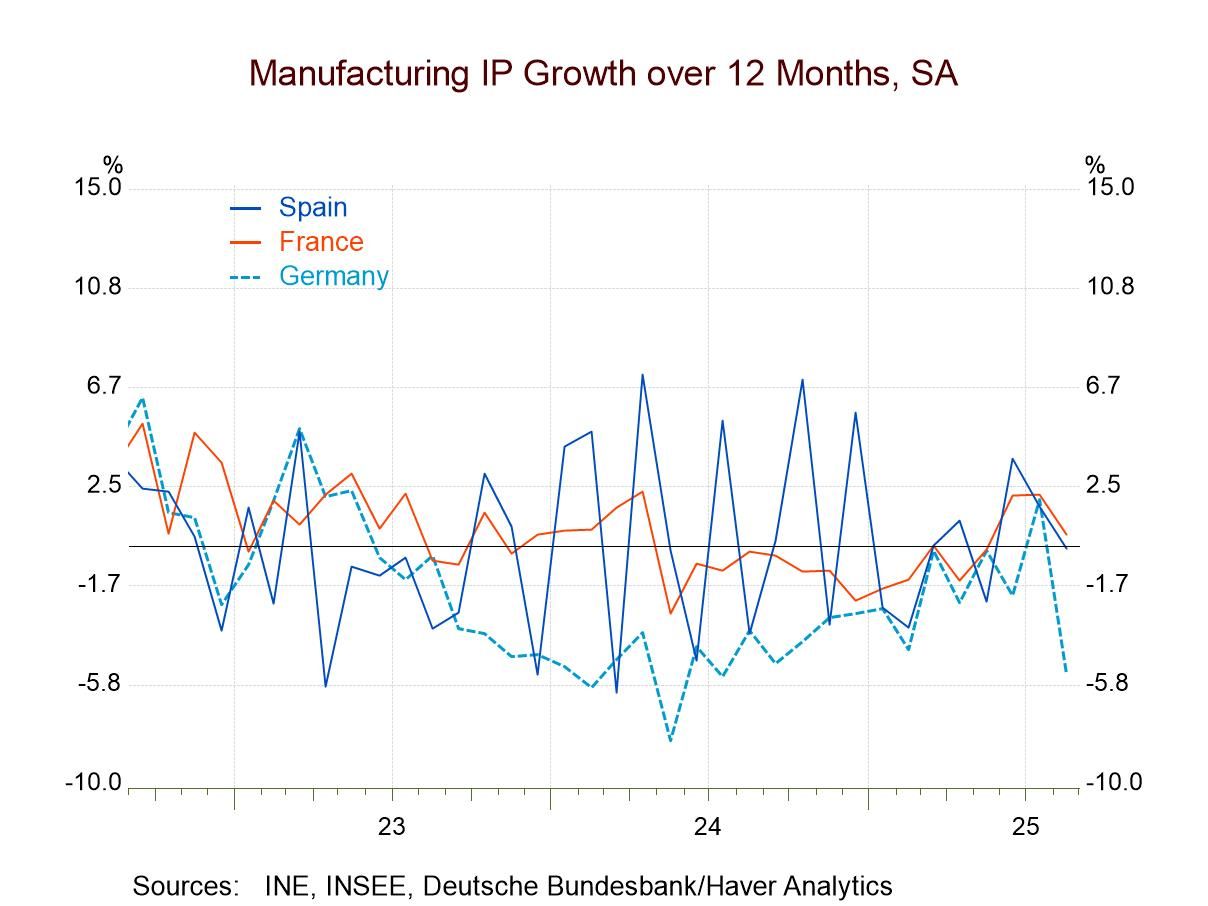 Global| May 03 2004
Global| May 03 2004Rise in Manufacturing in the Euro Zone Beats Consensus as Export Orders Climb
Summary
Purchasing managers in the Euro-12 reported continued growth in manufacturing in April. (Diffusion indexes that range from 0% to 100% based on surveys are complied for Reuters Group Plc by NTC Research Ltd. A percentage over 50% [...]

Purchasing managers in the Euro-12 reported continued growth in manufacturing in April. (Diffusion indexes that range from 0% to 100% based on surveys are complied for Reuters Group Plc by NTC Research Ltd. A percentage over 50% indicates expansion while on below 50% indicates a contraction.)
The overall Euro zone index, which began to rise in the last half of 2003, rose 1.3% from March to 54.0% in April, the highest level seen since December, 2000 and above the consensus of 53.3% reported by the Financial Times. Among the individual countries for which data are available, Germany and the Netherlands showed the greatest month-to-month increases of 2.4% and 2.9%, respectively. More modest increases were reported for Spain and Greece, while a decline of 1.4% was reported for Austria.
Much of the strength in manufacturing is due to foreign demand as shown in the attached chart. (Since data on export orders for the Euro zone are not available, we have used export orders for Germany as a proxy for the total Euro Zone.) Export orders in the individual countries have been rising sharply, reflecting growth in demand from the U. S. and Asia, particularly China. The decline in the euro since its high on February 18, has also contributed to the rise in export orders.
| Purchasing Managers Survey (%) |
Apr 04 | Mar 04 |
|---|---|---|
| Euro zone | 53.95 | 53.26 |
| France | 53.53 | 53.24 |
| Germany | 55.34 | 54.07 |
| Italy | 52.48 | 52.15 |
| Netherlands | 53.35 | 51.85 |
| Spain | 53.59 | 52.92 |
| Greece | 54.48 | 53.83 |
| Austria | 53.92 | 54.70 |





